Jamaican Coffees
Jamaica Blue Mountain (Medium Roasted)
This coffee has an excellent cup quality with a subtle delicacy and very mild acidity. Its limited production, plus high demand has resulted in its scarcity and very high price. We recommend preparation in filter makers. Serve black or
Introductions of Special Blended Coffees
The variations in flavour that can be produced by skilful blending are endless.
Its aim is to bring together the individual and sometimes contrasting flavours of the world’s great original coffees, creating new and exciting harmonies that will delight the consumer.
It will take you into the selection that will suit your taste for coffees that can be drunk at different times of day or on different occasions.
Mild Blends
The variations in flavour that can be produced by skilful blending are endless. The harmonising of superb and individual characteristics that will delight the consumer is paramount.
Breakfast Blend (Medium Roasted)
A full bodied coffee with a pleasing mild, nutty acidity. We blend selected varieties from Colombia and India, creating a breakfast coffee to enjoy black or with hot milk. Recommended for preparation in filter makers or by the jug method.
Chagga (Medium) Blend (Medium Roasted)
A blend of Chagga from Mount Kilimanjaro with a quality India coffee. This is an excellent morning or after-lunch coffee.
Hanover Blend (Medium Roasted)
A rich, very full bodied, high quality blend achieved by sensitively blending Costa Rica Tarrazu, Tanzania Kibo Chagga, Colombia Supreme and Brazil Santos. A very versatile coffee to be enjoyed with most foods. Recommended for preparation by filter method. Serve black or with cream.
Mocha and Mysore Blend (Medium Roasted)
A light, mild coffee with an interesting, fruity acidity. A blend of Ethiopia Mocha and India Mysore. Recommended for filter makers and Cafetières. Serve black or with cream or hot milk.
Medium Blends
The variations in flavour that can be produced by skilful blending are endless. The harmonising of superb and individual characteristics that will delight the consumer is paramount.
Brazilia Blend (Blended Roasts)
This combines Brazil Santos, Colombia and India coffees, specially roasted and blended to create a milder "sweet" espresso coffee. Not as powerful in character as our Creole or Santa-Mokka blends, its function is is to satisfy those who want a large cup of coffee, a "long" espresso or milder cappuccino. It can also be enjoyed prepared by Filter machines or La Cafetières, as a full rich general purpose coffee.
Caffe Dora Blend (Blended Roasts)
Introducing Caffe Dora Blend.This coffee has been blended specially for use in an espresso machine. It has all the flavour of a great espresso coffee with only half the caffeine content. We also recommend it drunk black or with cream as a cafetiere coffee.
Java Chagga-Mocha Blend (Blended Roasts)
Three original coffees, roasted and blended to produce a rich flavour with an interesting, fruity background. Can be enjoyed with most foods. Serve black or with cream. Will prepare well in all makers, especially recommended for filters and Cafetières.
Vienna Blend (Blended Roasts)
A medium strong coffee with a subtle edge of strength and smooth background. We blend Brazil Santos and Tanzania Double A Chagga with Colombia Supreme. It will prepare well in all makers. Serve black or with cream.
Strong Blends
The variations in flavour that can be produced by skilful blending are endless. The harmonising of superb and individual characteristics that will delight the consumer is paramount.
After-Dinner Blend (Dark Roasted)
A strong, lively coffee with a full, nutty flavour. We use the same coffees as in Breakfast Blend, but roast longer to deepen the character. Will prepare well in all makers. Serve black or with cream.
Caffe Roma Blend (Blended Roasts)
A rich, lively strong coffee with a fine sweetness at the finish. Coffees from India, Tanzania and Brazil are blended to achieve this espresso, cappuccino coffee. It can also be prepared in filter makers and Cafetières.
Chagga (Dark) Blend (Dark Roasted)
A blend of Chagga from Mount Kilimanjaro with a quality India coffee. This is an excellent morning or after-lunch coffee.
Higgins Coffee-House Blend (Blended Roasts)
Strong and smooth with a subtle edge at the finish. We blend Colombia, Tanzania and India coffees to make this strong general purpose coffee. Prepares well in all coffee makers including percolators and can be enjoyed black or with cream.
Santa-Mokka Blend (Blended Roasts)
A smooth strong coffee with a rich, mellow background. We use coffees from Brazil and Colombia blending them to create an intense flavour that will produce strong cappuccino or medium strong espresso coffee. It is recommended for all makers. Serve black or with cream.
Its aim is to bring together the individual and sometimes contrasting flavours of the world’s great original coffees, creating new and exciting harmonies that will delight the consumer.
It will take you into the selection that will suit your taste for coffees that can be drunk at different times of day or on different occasions.
Mild Blends
The variations in flavour that can be produced by skilful blending are endless. The harmonising of superb and individual characteristics that will delight the consumer is paramount.
Breakfast Blend (Medium Roasted)
A full bodied coffee with a pleasing mild, nutty acidity. We blend selected varieties from Colombia and India, creating a breakfast coffee to enjoy black or with hot milk. Recommended for preparation in filter makers or by the jug method.
Chagga (Medium) Blend (Medium Roasted)
A blend of Chagga from Mount Kilimanjaro with a quality India coffee. This is an excellent morning or after-lunch coffee.
Hanover Blend (Medium Roasted)
A rich, very full bodied, high quality blend achieved by sensitively blending Costa Rica Tarrazu, Tanzania Kibo Chagga, Colombia Supreme and Brazil Santos. A very versatile coffee to be enjoyed with most foods. Recommended for preparation by filter method. Serve black or with cream.
Mocha and Mysore Blend (Medium Roasted)
A light, mild coffee with an interesting, fruity acidity. A blend of Ethiopia Mocha and India Mysore. Recommended for filter makers and Cafetières. Serve black or with cream or hot milk.
Medium Blends
The variations in flavour that can be produced by skilful blending are endless. The harmonising of superb and individual characteristics that will delight the consumer is paramount.
Brazilia Blend (Blended Roasts)
This combines Brazil Santos, Colombia and India coffees, specially roasted and blended to create a milder "sweet" espresso coffee. Not as powerful in character as our Creole or Santa-Mokka blends, its function is is to satisfy those who want a large cup of coffee, a "long" espresso or milder cappuccino. It can also be enjoyed prepared by Filter machines or La Cafetières, as a full rich general purpose coffee.
Caffe Dora Blend (Blended Roasts)
Introducing Caffe Dora Blend.This coffee has been blended specially for use in an espresso machine. It has all the flavour of a great espresso coffee with only half the caffeine content. We also recommend it drunk black or with cream as a cafetiere coffee.
Java Chagga-Mocha Blend (Blended Roasts)
Three original coffees, roasted and blended to produce a rich flavour with an interesting, fruity background. Can be enjoyed with most foods. Serve black or with cream. Will prepare well in all makers, especially recommended for filters and Cafetières.
Vienna Blend (Blended Roasts)
A medium strong coffee with a subtle edge of strength and smooth background. We blend Brazil Santos and Tanzania Double A Chagga with Colombia Supreme. It will prepare well in all makers. Serve black or with cream.
Strong Blends
The variations in flavour that can be produced by skilful blending are endless. The harmonising of superb and individual characteristics that will delight the consumer is paramount.
After-Dinner Blend (Dark Roasted)
A strong, lively coffee with a full, nutty flavour. We use the same coffees as in Breakfast Blend, but roast longer to deepen the character. Will prepare well in all makers. Serve black or with cream.
Caffe Roma Blend (Blended Roasts)
A rich, lively strong coffee with a fine sweetness at the finish. Coffees from India, Tanzania and Brazil are blended to achieve this espresso, cappuccino coffee. It can also be prepared in filter makers and Cafetières.
Chagga (Dark) Blend (Dark Roasted)
A blend of Chagga from Mount Kilimanjaro with a quality India coffee. This is an excellent morning or after-lunch coffee.
Higgins Coffee-House Blend (Blended Roasts)
Strong and smooth with a subtle edge at the finish. We blend Colombia, Tanzania and India coffees to make this strong general purpose coffee. Prepares well in all coffee makers including percolators and can be enjoyed black or with cream.
Santa-Mokka Blend (Blended Roasts)
A smooth strong coffee with a rich, mellow background. We use coffees from Brazil and Colombia blending them to create an intense flavour that will produce strong cappuccino or medium strong espresso coffee. It is recommended for all makers. Serve black or with cream.
Introductions of Teas
One of the great pleasures of life is "a nice cup of tea". It can be enjoyed anywhere at anytime, but it is probably most enjoyed when taken at leisure. Although tea is easy to make, a certain amount of care and attention to detail is required if it is to be served at its best.
Use freshly drawn cold water and bring to the boil. Warm the teapot and measure in the tea. Quantities are a matter of personal preference, but as a general guide we recommend one teaspoon per person for small leaf teas, and one teaspoon per person plus one for the pot for the large leaf teas. When the water is boiling pour it directly on to the tea, taking the teapot to the kettle. The larger the leaf size the longer the infusion time.
Always keep the teapot clean. The deposits that will eventually build up in the teapot are detrimental to the flavour of your fine tea.
The recommended way to take tea with milk is to put the milk into the cup first. However, when trying a new tea the quantity of milk may need some adjustment, so experiment at first by putting only a very little milk into the cup before the tea - further milk may then be added if required. Green teas and oolong teas are usually taken without milk. Green teas, especially China teas, may be enjoyed with a slice of lemon. Alternatively, a little sugar is reputed to enhance the flavour and character of green tea.
Types of Tea
The finest teas are the result of a subtle combination of natural physical and climatic conditions, devoted and efficient production and manufacture. They can he enjoyed without being blended with other teas and are sometimes described in the tea trade as 'self-drinkers'. Fine teas correspond to the fine wines in the wine trade, each having its own identity and being appreciated for itself.
Manufactured tea can be divided into three groups:
Fermented Tea (Black Tea): By far the largest group, black tea can be drunk with or without milk.
Unfermented Tea (Green Tea):Produced mainly in China and Japan. Best drunk without milk.
Semi-fermented Tea (Oolong Tea):Produced mainly in Formosa. Best drunk without milk.
Storing Tea
Tea is generally easy to store. It keeps best in volume, so avoid leaving a single packet on the shelf. Store it in a container with a tight fitting lid, a caddy, or storage jar, out of the light in a cool dry place, away from other strong penetrating aromas. Tea will become stale and produce
disappointing results if left with prolonged exposure to the air
Teas By Country
Ceylon (Sri Lanka)
In the world of tea production Ceylon is still the recognised name for teas from the beautiful island country of Sri-Lanka, a name the country re-adopted in 1972. The island is rich in natural resources, and in the fertile hill-country growing conditions are excellent for the production of quality tea.
Ceylon Dimbula (Black Tea)
Dimbula was one of the first areas to be planted in the 1870s. This tea has a lovely bright flavour and rich colour.
Ceylon Orange Pekoe Pettiagalla (Black Tea)
A special fine quality Ceylon tea. Selected for its smooth, full, distinctive character.
China
The Chinese describe tea being drunk as long ago as 2700 BC, but until the Tang Dynasty 618-907 AD it was taken mainly as a medicine. Before the Second World War, China produced half the world's supply and old records tell us that at one time Chinese Tea Merchants recognised 8,000 different grades of tea.
Pu Erh (Black Tea)
Pu Erh tea is grown in the Yunnan province of China where it has been drunk as a curative for around 2000 years. This tea has been ripened using carefully controlled fermentation giving the leaves an reddish orange appearance. The flavour is earthy, smooth and slightly toasted. Brew for 3 to 4 minutes. A further infusion is possible. Serve without milk.
Jasmine (Green Tea)
From the Fujian province, A semi-fermented tea scented with Jasmine flowers.
Keemun (Black Tea)
From Northern China, an aromatic tea with a very smooth, soft character. It is suitable for drinking black, or with a slice of lemon, or with milk.
China Lapsang Souchong (Black Tea)
Famous for its smoky, syrupy taste, yet having a smooth flavour. Compared with the Formosa Lapsang Souchong this is lighter in character.
Rose Congou (Black Tea)
From the North of China, this flavoursome large leaf tea has a distinctive fragrance from being scented with rose petals.
Yunnan (Black Tea)
From one of China's largest and most famous tea growing provinces, this fine tea has a lovely fresh aroma and a powerful flavour with a crisp tangy edge.
Formosa (Taiwan)
This island country off the coast of China is famous for its production of Oolong Teas. These semi-fermented teas have a delicacy and excellence unique to Formosa production.
Formosa Lapsang SouchongBlack Tea
A very powerful tea with a tarry or smoky character. Stronger than the China Lapsang Souchong.
Formosa Oolong (Oolong Tea)
A light, delicately flavoured tea with a soft fruity background. Best served black.
Oolong Silver Tip (Oolong Tea)
Demand from Japan has made this tea difficult to obtain. It is a large leaf tea of exceptional quality, it makes a smooth, fragrant cup with a peachy background.
India
This vast and climatically varied country, with its long association with Britain, is a major producer of black tea. Fine quality India teas are now famous and in demand throughout the tea-drinking world.
Darjeeling Garden Mark Castleton (Black Tea)
The best Darjeeling tea is described by the connoisseur as a 'champagne' among teas, because of its fine character and quality. This is an example of one of the world's choicest teas, which is in limited supply because of demand. There are many tea gardens within the Darjeeling district. We select tea from a particular garden each season.
Sikkim Garden Mark Temi Flowery Orange Pekoe (Black Tea)
Sikkim, a British Protectorate since 1817 and incorporated into India in 1975, lies between Nepal and Bhutan, in the Himalayas, north of Darjeeling. This tea is grown at altitudes of 4,000 to 5,000 feet above sea-level and the remote area produces only a small amount of tea each year. It is much sought after by connoisseurs because of its quality and rich aromatic flavour.
Darjeeling Fine Tippy Golden Flowery Orange Pekoe (Black Tea)
Grown at altitude along the slopes of the Himalayas, this is a highly esteemed tea, rich in the cup and having a delightful muscatel aroma
Darjeeling Flowery Orange Pekoe (Black Tea)
A quality leaf tea with a delicate flavour.
Assam Garden Mark Dejoo (Black Tea)
The Dejoo tea estate lies in the province of Lakhimpur, Assam. The flavour is brisk and full bodied. Brew for 4 to 5 minutes and serve black or with milk.
Assam Garden Mark Dikom (Black Tea)
The Dikom garden is in the northern part of Assam. The tea has a light malty character with a golden appearance in the cup. Brew for 4 to 5 minutes and enjoy black or with milk.
Assam Tippy Golden Broken Orange Pekoe (Black Tea)
This is a fine example of a rich Assam tea with a very full and well balanced flavour.
Assam C.T.C. (Black Tea)
Following the demand for small leaf teas which infuse quickly, tea production has become highly mechanised. C.T.C. (Crush, Tear, Curl) production gives a very strong tea in the cup with a powerful full-bodied flavour.
Nilgiri Broken Orange Pekoe (Black Tea)
A strong bright lively tea from the famous Nilgiri hills in the south of India. Excellent with milk or black or with a slice of lemon.
Use freshly drawn cold water and bring to the boil. Warm the teapot and measure in the tea. Quantities are a matter of personal preference, but as a general guide we recommend one teaspoon per person for small leaf teas, and one teaspoon per person plus one for the pot for the large leaf teas. When the water is boiling pour it directly on to the tea, taking the teapot to the kettle. The larger the leaf size the longer the infusion time.
Always keep the teapot clean. The deposits that will eventually build up in the teapot are detrimental to the flavour of your fine tea.
The recommended way to take tea with milk is to put the milk into the cup first. However, when trying a new tea the quantity of milk may need some adjustment, so experiment at first by putting only a very little milk into the cup before the tea - further milk may then be added if required. Green teas and oolong teas are usually taken without milk. Green teas, especially China teas, may be enjoyed with a slice of lemon. Alternatively, a little sugar is reputed to enhance the flavour and character of green tea.
Types of Tea
The finest teas are the result of a subtle combination of natural physical and climatic conditions, devoted and efficient production and manufacture. They can he enjoyed without being blended with other teas and are sometimes described in the tea trade as 'self-drinkers'. Fine teas correspond to the fine wines in the wine trade, each having its own identity and being appreciated for itself.
Manufactured tea can be divided into three groups:
Fermented Tea (Black Tea): By far the largest group, black tea can be drunk with or without milk.
Unfermented Tea (Green Tea):Produced mainly in China and Japan. Best drunk without milk.
Semi-fermented Tea (Oolong Tea):Produced mainly in Formosa. Best drunk without milk.
Storing Tea
Tea is generally easy to store. It keeps best in volume, so avoid leaving a single packet on the shelf. Store it in a container with a tight fitting lid, a caddy, or storage jar, out of the light in a cool dry place, away from other strong penetrating aromas. Tea will become stale and produce
disappointing results if left with prolonged exposure to the air
Teas By Country
Ceylon (Sri Lanka)
In the world of tea production Ceylon is still the recognised name for teas from the beautiful island country of Sri-Lanka, a name the country re-adopted in 1972. The island is rich in natural resources, and in the fertile hill-country growing conditions are excellent for the production of quality tea.
Ceylon Dimbula (Black Tea)
Dimbula was one of the first areas to be planted in the 1870s. This tea has a lovely bright flavour and rich colour.
Ceylon Orange Pekoe Pettiagalla (Black Tea)
A special fine quality Ceylon tea. Selected for its smooth, full, distinctive character.
China
The Chinese describe tea being drunk as long ago as 2700 BC, but until the Tang Dynasty 618-907 AD it was taken mainly as a medicine. Before the Second World War, China produced half the world's supply and old records tell us that at one time Chinese Tea Merchants recognised 8,000 different grades of tea.
Pu Erh (Black Tea)
Pu Erh tea is grown in the Yunnan province of China where it has been drunk as a curative for around 2000 years. This tea has been ripened using carefully controlled fermentation giving the leaves an reddish orange appearance. The flavour is earthy, smooth and slightly toasted. Brew for 3 to 4 minutes. A further infusion is possible. Serve without milk.
Jasmine (Green Tea)
From the Fujian province, A semi-fermented tea scented with Jasmine flowers.
Keemun (Black Tea)
From Northern China, an aromatic tea with a very smooth, soft character. It is suitable for drinking black, or with a slice of lemon, or with milk.
China Lapsang Souchong (Black Tea)
Famous for its smoky, syrupy taste, yet having a smooth flavour. Compared with the Formosa Lapsang Souchong this is lighter in character.
Rose Congou (Black Tea)
From the North of China, this flavoursome large leaf tea has a distinctive fragrance from being scented with rose petals.
Yunnan (Black Tea)
From one of China's largest and most famous tea growing provinces, this fine tea has a lovely fresh aroma and a powerful flavour with a crisp tangy edge.
Formosa (Taiwan)
This island country off the coast of China is famous for its production of Oolong Teas. These semi-fermented teas have a delicacy and excellence unique to Formosa production.
Formosa Lapsang SouchongBlack Tea
A very powerful tea with a tarry or smoky character. Stronger than the China Lapsang Souchong.
Formosa Oolong (Oolong Tea)
A light, delicately flavoured tea with a soft fruity background. Best served black.
Oolong Silver Tip (Oolong Tea)
Demand from Japan has made this tea difficult to obtain. It is a large leaf tea of exceptional quality, it makes a smooth, fragrant cup with a peachy background.
India
This vast and climatically varied country, with its long association with Britain, is a major producer of black tea. Fine quality India teas are now famous and in demand throughout the tea-drinking world.
Darjeeling Garden Mark Castleton (Black Tea)
The best Darjeeling tea is described by the connoisseur as a 'champagne' among teas, because of its fine character and quality. This is an example of one of the world's choicest teas, which is in limited supply because of demand. There are many tea gardens within the Darjeeling district. We select tea from a particular garden each season.
Sikkim Garden Mark Temi Flowery Orange Pekoe (Black Tea)
Sikkim, a British Protectorate since 1817 and incorporated into India in 1975, lies between Nepal and Bhutan, in the Himalayas, north of Darjeeling. This tea is grown at altitudes of 4,000 to 5,000 feet above sea-level and the remote area produces only a small amount of tea each year. It is much sought after by connoisseurs because of its quality and rich aromatic flavour.
Darjeeling Fine Tippy Golden Flowery Orange Pekoe (Black Tea)
Grown at altitude along the slopes of the Himalayas, this is a highly esteemed tea, rich in the cup and having a delightful muscatel aroma
Darjeeling Flowery Orange Pekoe (Black Tea)
A quality leaf tea with a delicate flavour.
Assam Garden Mark Dejoo (Black Tea)
The Dejoo tea estate lies in the province of Lakhimpur, Assam. The flavour is brisk and full bodied. Brew for 4 to 5 minutes and serve black or with milk.
Assam Garden Mark Dikom (Black Tea)
The Dikom garden is in the northern part of Assam. The tea has a light malty character with a golden appearance in the cup. Brew for 4 to 5 minutes and enjoy black or with milk.
Assam Tippy Golden Broken Orange Pekoe (Black Tea)
This is a fine example of a rich Assam tea with a very full and well balanced flavour.
Assam C.T.C. (Black Tea)
Following the demand for small leaf teas which infuse quickly, tea production has become highly mechanised. C.T.C. (Crush, Tear, Curl) production gives a very strong tea in the cup with a powerful full-bodied flavour.
Nilgiri Broken Orange Pekoe (Black Tea)
A strong bright lively tea from the famous Nilgiri hills in the south of India. Excellent with milk or black or with a slice of lemon.
Friday, December 12, 2008
Subscribe to:
Post Comments (Atom)
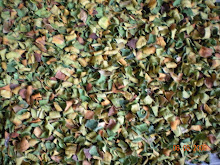



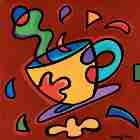





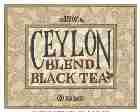
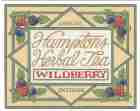
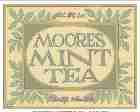
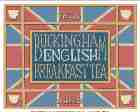

No comments:
Post a Comment